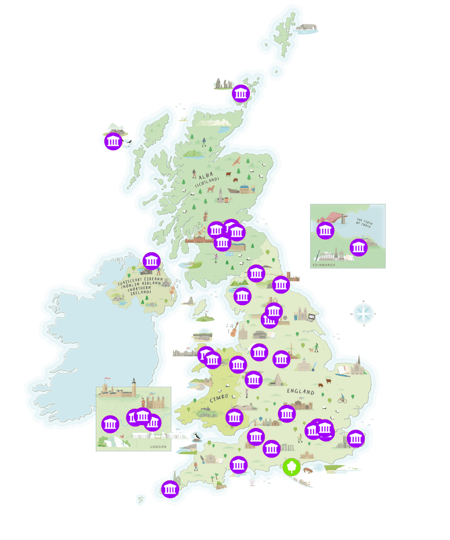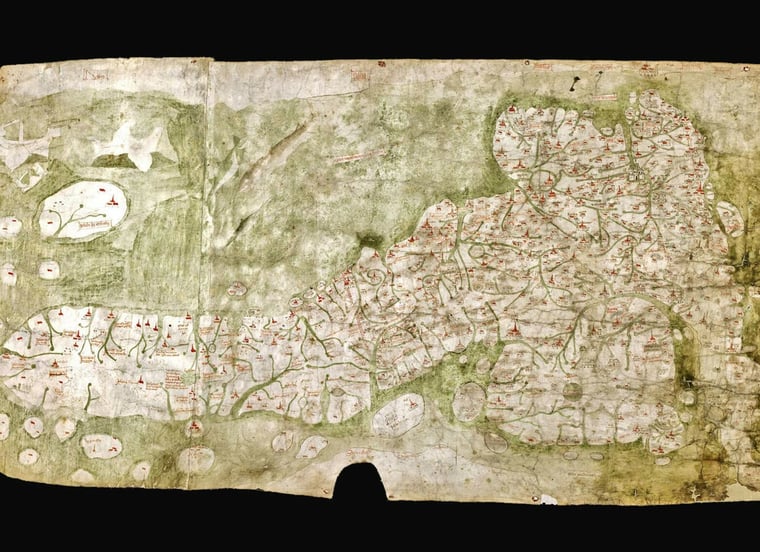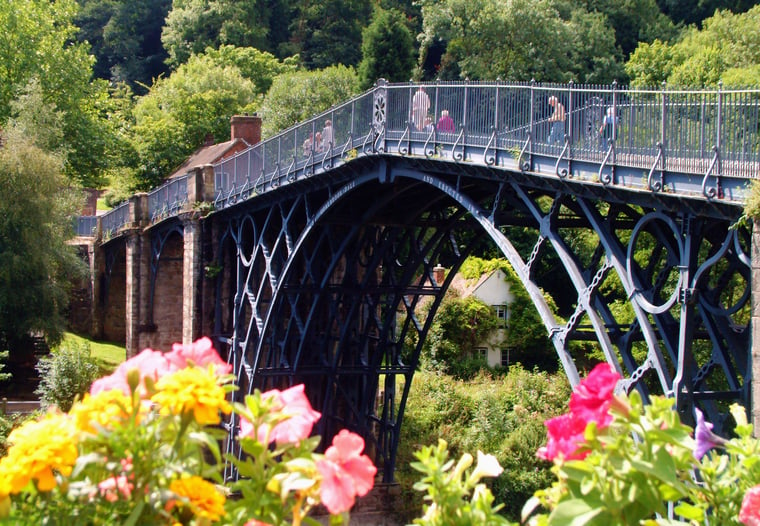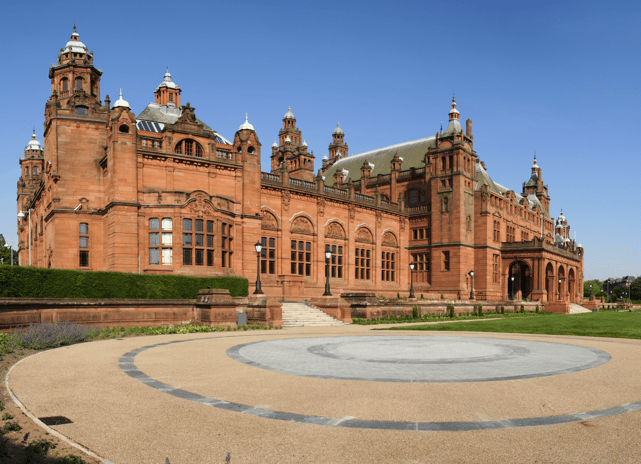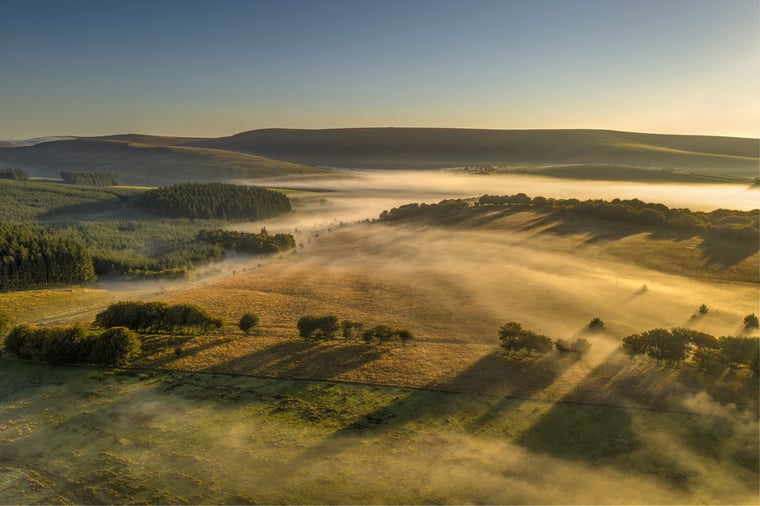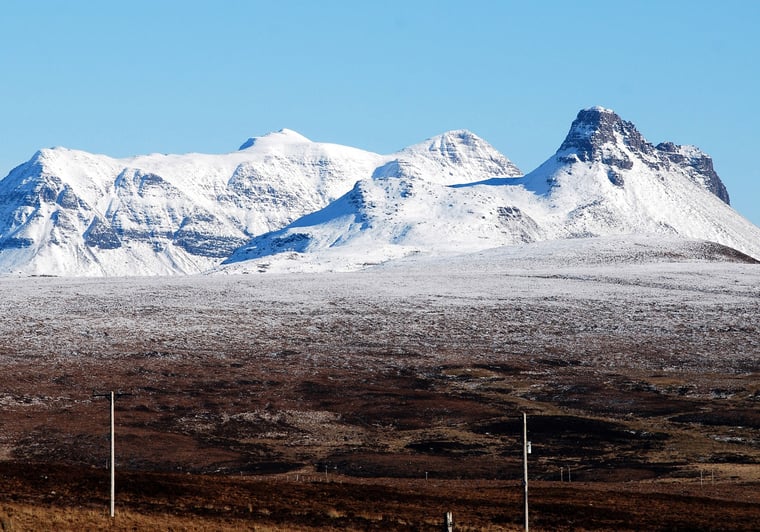Header image: The Flow Country (image copyright: NatureScot)
From the ancient landscape and monuments of Stonehenge, the Jurassic Coast packed with 150 million years of life, to the lonely island of St Kilda evacuated after four thousand years of human occupation, UNESCO World Heritage sites tell the unique story of the UK’s contribution to the world. These sites belong to everyone, and it is everyone’s duty to protect them for future generations.
World Heritage sites represent the diversity of our planet and the people who have lived on it. They show the development of human history over thousands of years and celebrate the best of who we are – through art, architecture, religion, industry and much more. They are ours to share, to cherish and to respect. Their disappearance would be an irreparable loss to humanity. There are more than 1,000 sites on the World Heritage list globally, in three categories – cultural (such as a temple), natural (like a rainforest), and mixed (where both cultural and natural elements exist at the same location).
Scroll down for details of each UNESCO World Heritage Site in the UK and overseas territories.
New inscriptions onto the UNESCO World Heritage list: July 2024
The Flow Country
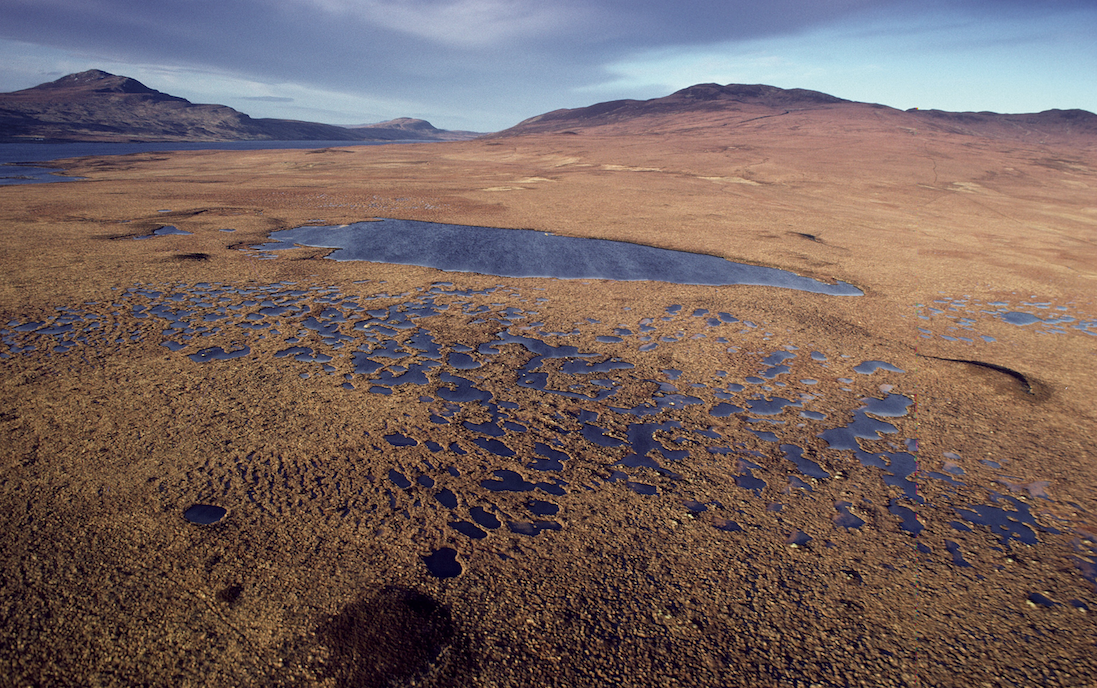
The Flow Country is widely considered to be the largest area of blanket bog in the world, covering about 4,000km2 (1,500 square miles) in Caithness and Sutherland, in northern Scotland.
Together with associated areas of heath and open water, the Flow Country is of international importance as a habitat, and for the diverse range of rare and unusual breeding birds it supports.
The Flow Country encompasses an exceptionally wide range of vegetation and surface pattern types, including numerous pool systems. Such features are usually rare and localised but in the Flow Country they are widespread, and a high proportion of the ground remains undisturbed. The range of mire types varies from those of the lowland Caithness plain in the east, through to those of the mountainous oceanic west.
Moravian Church Settlements
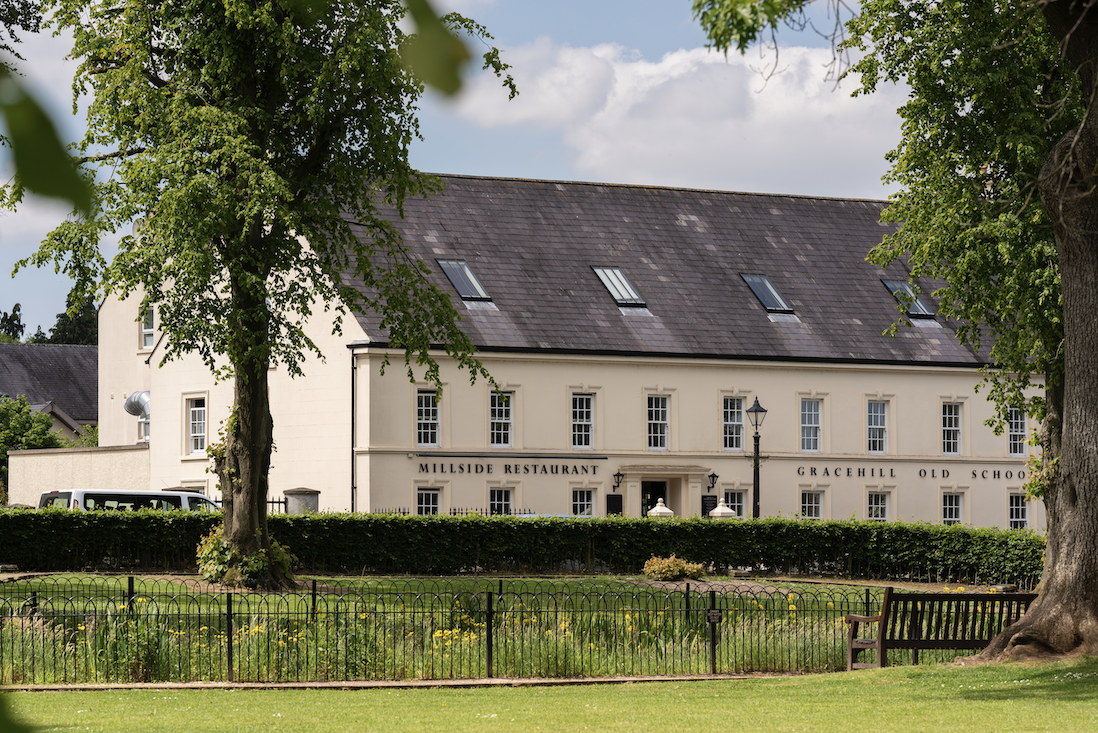
Moravian Church Settlements are located in three municipalities: Herrnhut (Germany), Bethlehem (United States of America), and Gracehill (Northern Ireland). The settlements are characterised by overarching planning principles guided by the ideals of the Moravian Church, as expressed in their plans and democratic organisation.
Each settlement has its own architectural character based on an original Moravian Church Civic Baroque style but adapted to local conditions. Together, they represent the transnational scope and consistency of the international Moravian community as a global network, developed from the 18th century.
Explore the UNESCO World Heritage sites in the UK and overseas territories
Blenheim Palace
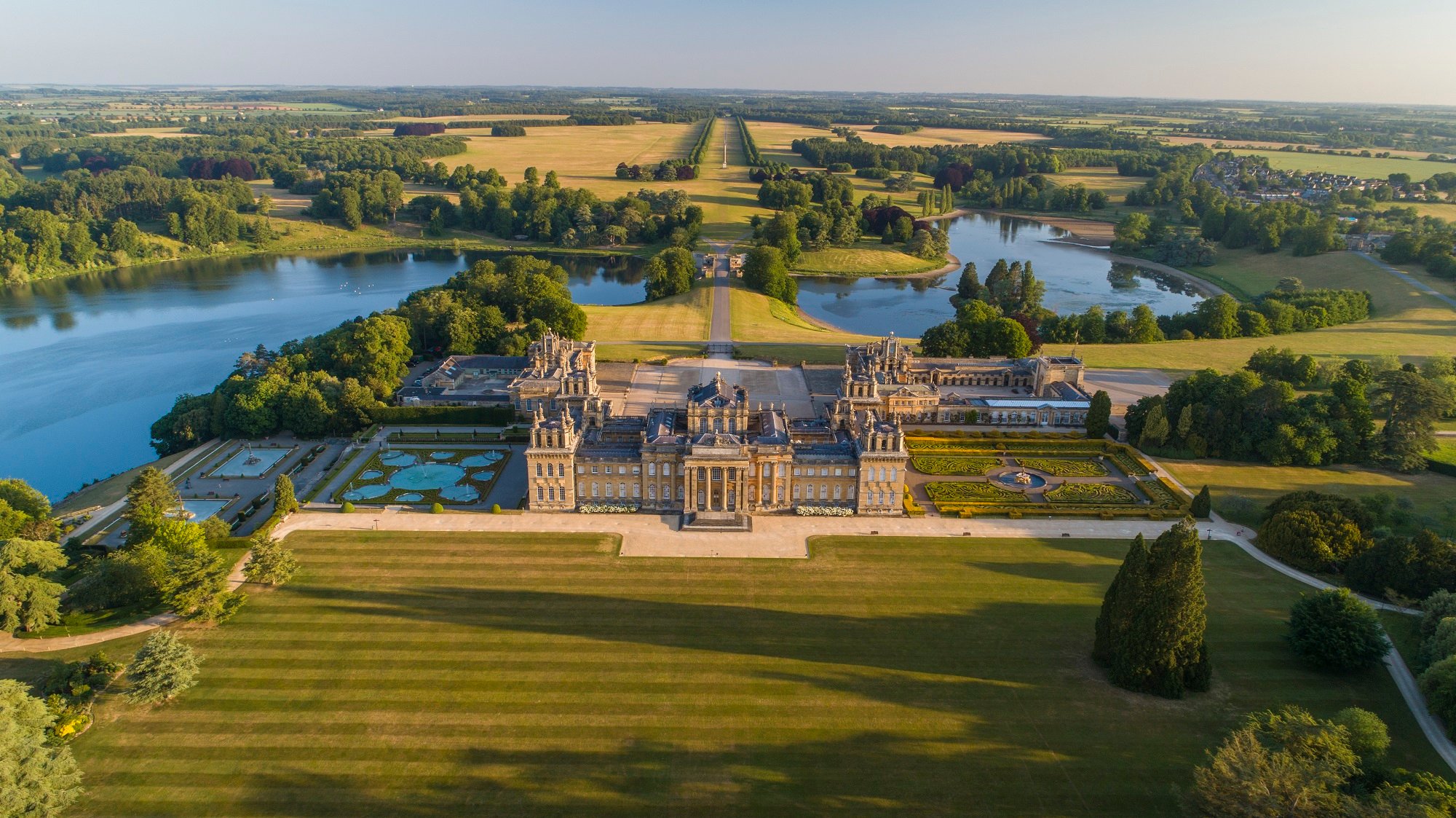
Blenheim Palace is one of the most beautiful princely residences in the world. Commissioned by Queen Anne to personally thank the Duke of Marlborough for defeating France and Bavaria at the Battle of Blenheim in 1705, no expense was spared in constructing this trend-setting masterpiece of architecture. Built in a style that rejected the countries it had just defeated, and home to awe-inspiring sculptured grounds designed by Britain’s greatest gardener – no wonder the site has been called the naturalistic Versailles.
Giant’s Causeway and Causeway Coast
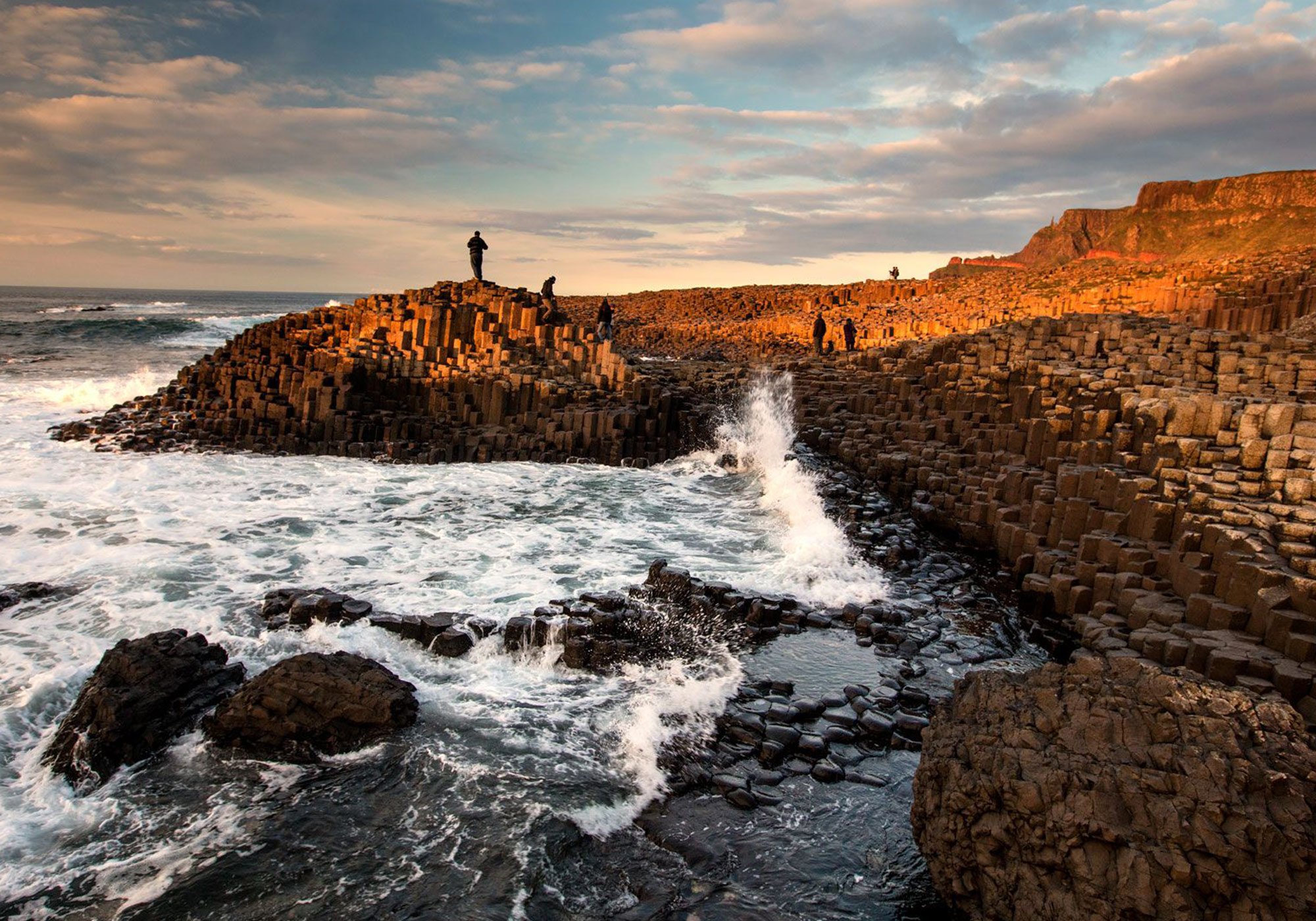
Outstanding, spectacular, dynamic, rugged – these are some of the words you’ll find used to describe the 60 million-year-old Giant’s Causeway and Causeway Coast. Formed in fire when the North Atlantic Ocean was created, the hexagonal basalt blocks are part of Europe’s most extensive lava field. Some say the ancient mythical giant Fionn MacCumhail built the Giant’s Causeway to fight his Scottish rival giant, Benandonner. Giants or the extraordinary power of nature, prepare to be impressed by the sheer beauty of this coastline.
Dorset and East Devon Coast (The Jurassic Coast)

See millions of years of the Earth’s history packed into just under 100 miles of stunning coastline. The cliff exposures along the Dorset and East Devon Coast provide an almost continuous sequence of rock formations spanning the Mesozoic Era, or some 185 million years of the earth’s history. The area’s important fossil sites and classic features such as Durdle Door have contributed to the study of earth sciences for over 300 years.
Pontcysyllte Aqueduct and Canal

Dare you cross the largest aqueduct in Britain? And can you do it without looking down? Pontcysyllte means ‘the bridge that connects’ and is one of the world’s most remarkable achievements of the industrial revolution. It was built between 1795 and 1808 by Thomas Telford and William Jessop, and created a navigable union between England and Wales. The canal became a testing ground for new ideas that were carried forward into subsequent engineering practice internationally. And in case you were wondering, Pontcysyllte is pronounced ‘pont-kur-suck-tay’.
The Forth Bridge

The Forth Bridge is one of the world’s most magnificent cantilever bridges. Still in use today, it was the world’s first significant steel edifice and remains a powerful symbol of Britain’s industrial, scientific, architectural and transport heritage, and, in particular, Scotland’s engineering pedigree and ingenuity. The distinctive red bridge still carries around 200 local and intercity trains across the Forth every day and forms a crucial part of the national East Coast Main Line.
Ironbridge Gorge

The cradle of the Industrial Revolution. Nowhere else has had more influence on our modern world. Ironbridge Gorge is bursting with coal, clay, iron ore and limestone – the essential ingredients needed to produce objects on an industrial scale. When Abraham Derby acquired a furnace at the site in 1709, little did he know his discovery would help lead to some of the most far-reaching changes in human history. Get to grips with the processes that shaped our modern world at the Silicon Valley of its time.
The Slate Landscape of Northwest Wales
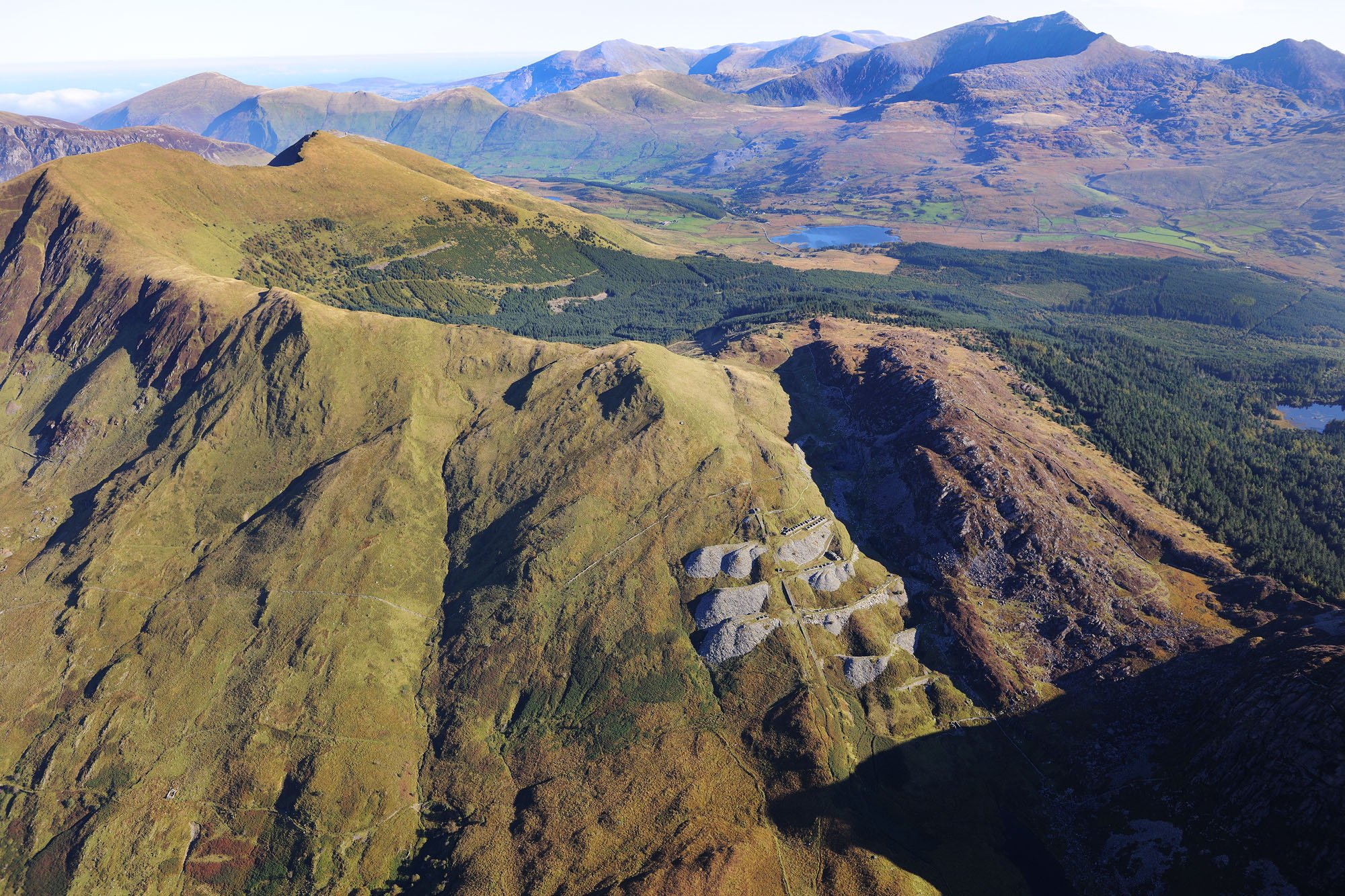
The story of Wales slate is an age-old one. This post-industrial landscape has a special place in the hearts of residents. The Slate Landscape of North West Wales tells the story of the evolution of a quiet, agricultural region to an area where there was no escape from the slate industry. As well as the quarries themselves, both on the surface and underground, this cultural landscape has also been shaped by the need to tip substantial quantities of waste rock; to process and transport slate; to manage water as both a threat and an asset; to house workers and their families; and to provide for their material, moral and intellectual well-being
Derwent Valley Mills
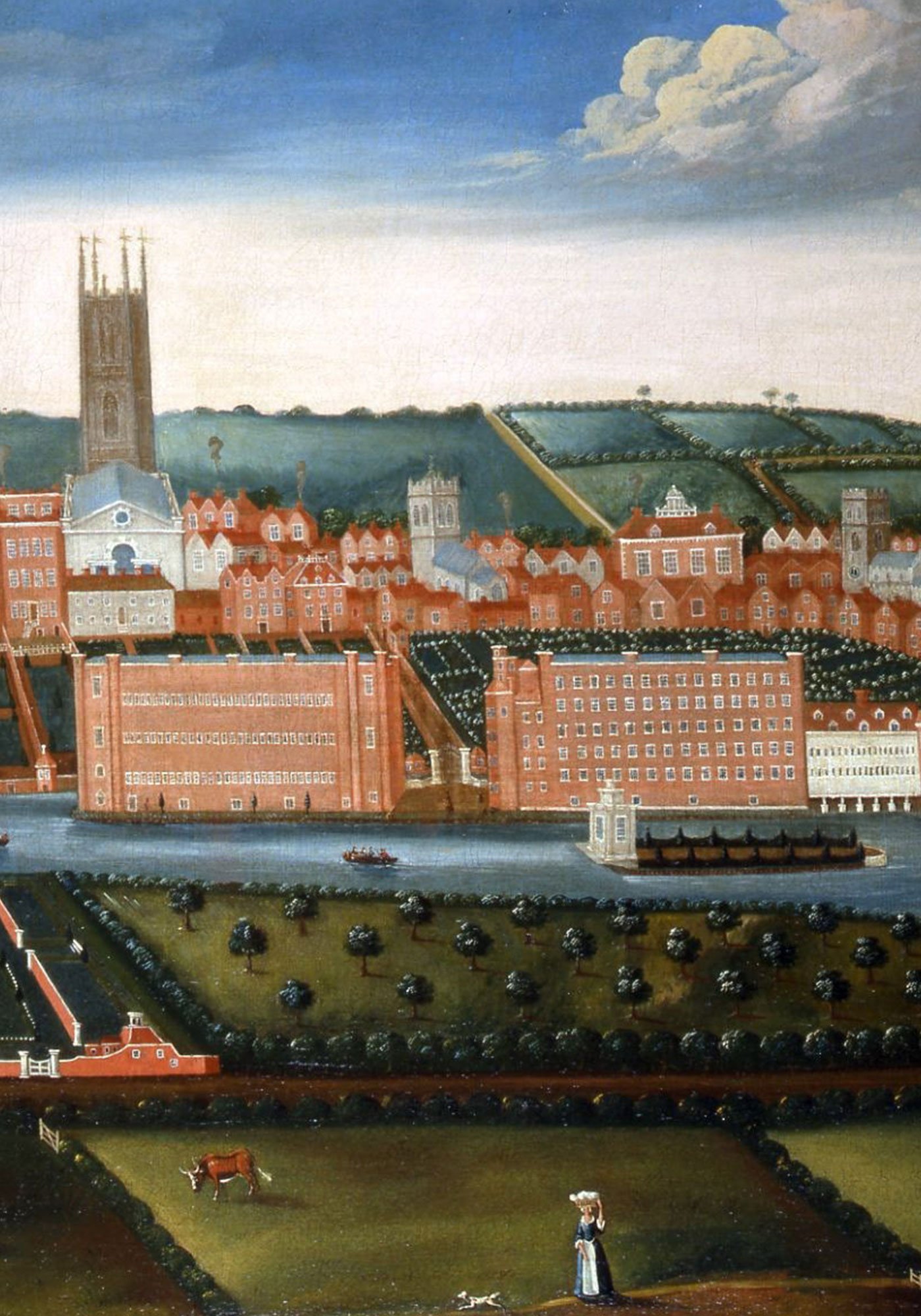
It was in the Derwent Valley during the 18th century that the factory system was born – an event which transformed economies and landscapes around the world. The site is home to a series of pioneering historical mill complexes and the watercourses that powered them. No less important are the settlements built for the mill workers, the canals, railways and other structures – all within a landscape which has changed little over two centuries.
Saltaire

Saltaire is a complete and well-preserved industrial village in West Yorkshire dating from the second half of the 19th century. Its textile mills, public buildings and workers’ houses are built in a harmonious style of high architectural standards, and the urban plan survives intact, giving a vivid impression of Victorian philanthropic paternalism.
New Lanark

Robert Owen achieved the impossible. Creating the world’s largest industrial village at the start of the 1800s at New Lanark, he strove to build a better society by improving the health, education and well being of his workers. New Lanark and Owen’s legacy is the reminder to the world that making money does not automatically imply the degradation of your workers. This is one UNESCO World Heritage site ahead of the curve.
Four World Heritage sites in London
London is one of the few cities in the world that can lay claim to having four UNESCO World Heritage sites. These sites represent the most significant cultural proprieties in greater London. From where Queens have met their sticky end at the Tower of London, to the world’s most extensive and diverse collection of plants at Kew, these four sites tell the story of a global city and its impact on our world.
Royal Botanic Gardens, Kew

Founded by Princess Augusta in 1759, the Royal Botanic Gardens at Kew showcases the world’s most extensive collection of living plants and fungi. The Gardens are recognised around the world as a centre of excellence for the study of plants—based on unrivalled living and preserved plant and fungal collections. Over the years, the site has made a significant contribution to human knowledge and understanding of botanical diversity and how it can be harnessed for the benefit of future generations.
Palace of Westminster and Westminster Abbey including Saint Margaret’s Church

Ever since Edward the Confessor constructed his palace and church here in the 11th century AD, the Palace of Westminster and Westminster Abbey have been one of the ultimate symbols of monarchy, religion and power. The stunning neo-gothic Westminster Palace, rebuilt in 1840, represents the culmination of a journey from a feudal society to a modern democracy. The stunning gothic Palace of Westminster is not just a site you see; it is also recognised internationally with the sound of “Big Ben” being broadcast regularly around the world.
Tower of London

Built to protect the gateway to London and declare Norman supremacy over a defeated population, the Tower of London is a symbol of royal power, fear, and a reminder of the last time England was successfully invaded and defeated. One of England’s most iconic structures and the best example of an 11th-century fortress palace remaining in Europe, the Tower has been the stage for the many of the key historical events in Europe’s history, including the execution of three English queens.
Maritime Greenwich

The place where modern time began. This World Heritage site tells the story of English artistic and scientific endeavour in the 17th and 18th centuries. The Queen’s House was the first Palladian building in England, and the park contains the Old Royal Observatory, the work of Christopher Wren and the scientist Robert Hooke. The Observatory is where the earth’s movement was accurately measured and contributed to the development of global navigation.
Heart of Neolithic Orkney
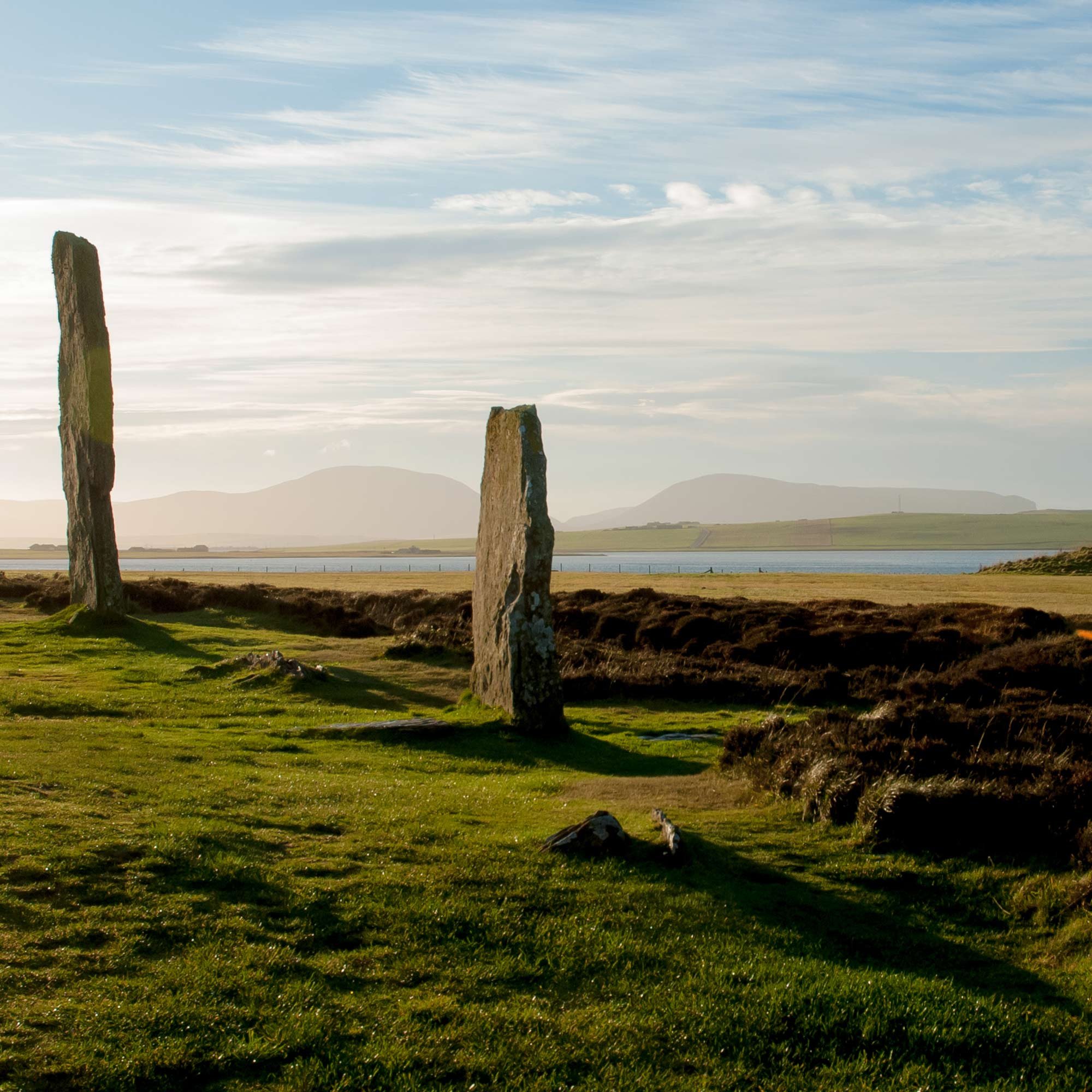
Some 5,000 years ago, the prehistoric people of the Orkney Islands began building extraordinary monuments out of stone. Each of the four Heart of Neolithic Orkney sites is a masterpiece of Neolithic design and construction in itself. But together they represent one of the richest surviving Neolithic landscapes in Western Europe. The Ring of Brodgar, Stones of Stenness, Maeshowe and Skara Brae, provide extraordinary evidence of the civilisation which gave rise to Stonehenge and Avebury.
Stonehenge, Avebury and Associated Sites

Shrouded in mystery, Stonehenge and Avebury are the most famous, massive and sophisticated prehistoric stone monuments in the world. They demonstrate the outstanding and creative potential of human beings to create something larger than themselves without technology. Visit the Stones and walk in the landscape, and you will find evidence of 2000 years of continuous human occupation and the extraordinary people that lived, worked and died in this landscape some 3000-5000 years ago.
St Kilda

St Kilda, a remote archipelago off the west coast of Scotland was home for thousands of years to a community that lived off the huge seabird colonies, rich seas and small-scale farming. Abandoned since 1930, the islands are now given over to nature and the towering sea cliffs and stacks are home to the most important seabird colony in the north-east Atlantic. With the Island now home to some one million rare and endangered sea birds, are you ready to sail to ‘the islands at the edge of the world’ for the experience of a lifetime?
Frontiers of the Roman Empire (The Antonine Wall)

The limit of one of the greatest empires history has known. The Roman Empire’s frontier stretched over 5,000km from the Atlantic coast of northern Britain, through Europe to the Black Sea, and from there to the Red Sea and across North Africa to the Atlantic Coast. Built on the orders of Emperor Hadrian in AD122, the epic 118-km-long Hadrian’s Wall and Antonine Wall was the northernmost limits of one of the greatest empires history has known.
Frontiers of the Roman Empire (Hadrian’s Wall)

Built by the Romans in the 2nd century AD, Hadrian’s Wall marks one of today’s most well-known frontiers of the Roman Empire. Stretching over 118 km across northern England, Hadrian’s Wall is not only a remarkable piece of ancient engineering but also a crucial window into our past. Its many vestiges of walls, ditches, forts and settlements provide striking insights into Roman defensive techniques and geopolitical strategies. It belonged to a 5,000 km border line, the ‘Roman Limes,’ which span from Britain’s north-west coast, through Europe to the Black Sea, across North Africa and all the way to the Atlantic coast. Today, Hadrian’s Wall is part of UNESCO’s World Heritage site, Frontiers of the Roman Empire, alongside Antonine Wall in Scotland and 550km-long Limes vestiges in Germany.
Jodrell Bank Observatory

Jodrell Bank is the earliest radio astronomy observatory in the world still in existence. It includes evidence of every stage of the post-1945 ground-breaking development of radio astronomy, which has revolutionised our understanding of the Universe. At its heart is the Lovell Telescope, which has been quietly probing the depths of space since 1957 and stands as a symbol of our wish to understand the universe in which we live. Even now, it remains one of the biggest and most powerful radio telescopes in the world, and has unlocked a parallel universe of violent explosions, pulsars, neurons, and proof of some of the most important scientific theories of the universe.
Canterbury Cathedral, St Augustine’s Abbey, and St Martin’s Church

When the young monk Augustine landed on the shores of England in the Kingdom of Kent in 597, he came with the mission was to convert the Anglo-Saxon world to the Christian Church in Rome. One thousand four hundred years later, Canterbury stands as a physical reminder of how he successfully brought the religion to the English-speaking world. The city is home to one one of the most beautiful cathedrals in Europe, the remains of Augustine’s Monastery, and the oldest church in the English-speaking world.
Durham Castle and Cathedral

Durham Cathedral is the largest and best example of Norman architecture in England. Built to place the local cult of the monk, bishop and hermit, St Cuthbert, on a par with that of St Peter in Rome, the dramatic and dynamic skyline of Durham Cathedral and Castle has towered over the city and landscape for thirty generations of pilgrims. Even today you can feel Durham Castle’s position as a demonstration of Norman power over a defeated people.
Castles and Town Walls of King Edward in Gwynedd

The finest medieval military castles in Europe since 1283. The four castles of Beaumaris, Conwy, Caernarfon, Harlech, and the fortified towns at Conwy and Caernarfon have not significantly changed since King Edward I of England’s Chief Architect, James of St George, first designed them in the 1200s. At no place in Europe are you closer to the actual dungeons, drawbridges, and people who constructed this medieval world. In the ‘land of the castles’, these four castles represent some of the most magnificent.
The English Lake District

Tranquil tarns, craggy mountains, glistening lakes, drystone walls and deep green fells are all characteristic features you can find in the Lake District in northwest England. Shaped by glaciers in the Ice Age, the area bears testimony to the centuries-long harmonious relationship between local communities and this beautiful piece of land. Its unique culture of communal hill-farming lies at the heart of this captivating area to this day and has shaped the landscape for hundreds of years. This World Heritage Site inspired the literary minds of great British writers such as William Wordsworth and Beatrix Potter, and keeps enthralling visitors as one of the UK’s most favourite national parks today.
Blaenavon Industrial Landscape

Blaenavon is a cultural landscape demonstrating how South Wales was the world’s major producer of iron and coal in the 19th century. The still visible coal and ore mines, quarries, a primitive railway system, furnaces and social infrastructure of the communities, provides a comprehensive picture of the crucial elements of the industrialisation process.
Studley Royal Park including
the Ruins of Fountains Abbey

Studley Royal Park was once referred to as ‘The Wonder of the North’, and you can see why walking among the ruins and stunning gardens. Undoubtedly the most spectacular water garden in England, Studley Royal Park is a true masterpiece of human creative genius, combining beautiful canals, ponds, lawns and hedges, with the romantic ruins of one of the most powerful abbeys in Britain.
Old and New Towns of Edinburgh

The extraordinary contrast between the winding medieval Old Town and the structured and planned streets of the New Town of Edinburgh is what makes this city unique and unrivalled in Europe. Explore some of the most beautiful monuments of their time, and be impressed by how Edinburgh was a significant Centre of thought and learning in the 18th century Age of Enlightenment.
City of Bath / The Great Spa Towns of Europe

The Romans founded Bath as a thermal spa in the 1st century AD. It boasts the only springs to be classified as ‘hot’ in the UK and produces over a million litres of water every day (The King’s Spring alone could fill your bathtub in 8 seconds flat). What’s more, with an average temperature of 45’c, you can see why the City developed its cult around a local water Goddess called Sulis. Her Temple and the baths complex are amongst the most famous and important ruins north of the Alps.
Cornwall and West Devon
Mining Landscape

The landscape of Cornwall and West Devon was transformed in the 18th and early 19th centuries as a result of the rapid growth of pioneering copper and tin mining. It is a landscape full of the remains of mines, engine houses, ports, harbours, alongside towns and villages which are a testimony to the contribution that Cornwall and West Devon made to the Industrial Revolution in Britain and the rest of the world.
World Heritage sites in UK Overseas Territories
In addition the World Heritage sites on the UK mainland and its islands, there are also a selection of UNESCO World Heritage sites located on the UK’s overseas territories.
Gough and Inaccessible Islands

Completely shut off from the world by two thousand nautical miles of open ocean and some of the world’s fiercest weather, the Gough and Inaccessible Islands are one of the last places in the world that remain close to pristine. Its spectacular cliffs, towering above the ocean, are home to one of the world’s largest and most important colonies of seabirds. Appreciate this World Heritage site from a distance.
Henderson Island

Sitting in the isolated east South Pacific Ocean, Henderson Island is one of the last few places in the world practically untouched by humans. Its isolation and distance is its strength, as despite its tiny size; ten of its plants, four of its land birds, and a third of its insects can be found nowhere else on the planet. Think white, sandy beaches, limestone cliffs, and birds and plants seen nowhere else in the world.
Gorham’s Cave Complex

The steep limestone cliffs on the eastern side of the Rock of Gibraltar contain four caves that for 125,000 years were home to a now extinct species of human being called Neanderthals. These caves have provided incredible insights into their life, including rare evidence of how they exploited local birds and marine animals for food. Gorham’s Cave provides a unique insight into the cognitive abilities of this now-extinct species who died out around 40,000 years ago.
Historic Town of St George and Related Fortifications, Bermuda

The Town of St George, founded in 1612, is an outstanding example of the earliest English urban settlement in the New World. Its associated fortifications graphically illustrate the development of English military engineering from the 17th to the 20th century.


